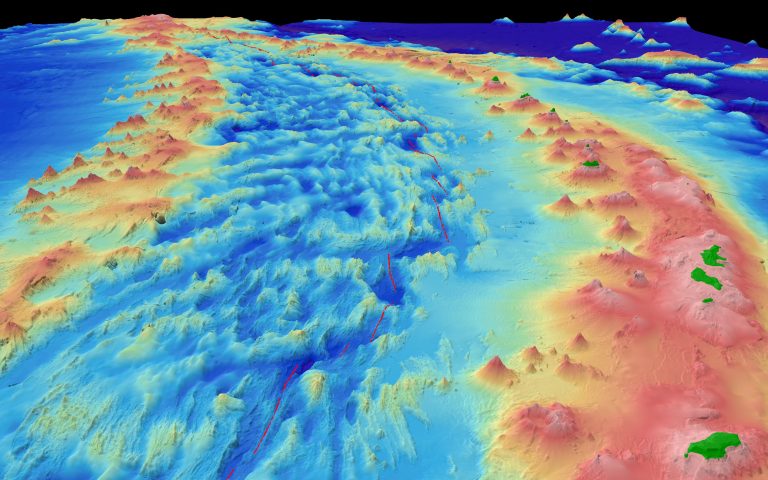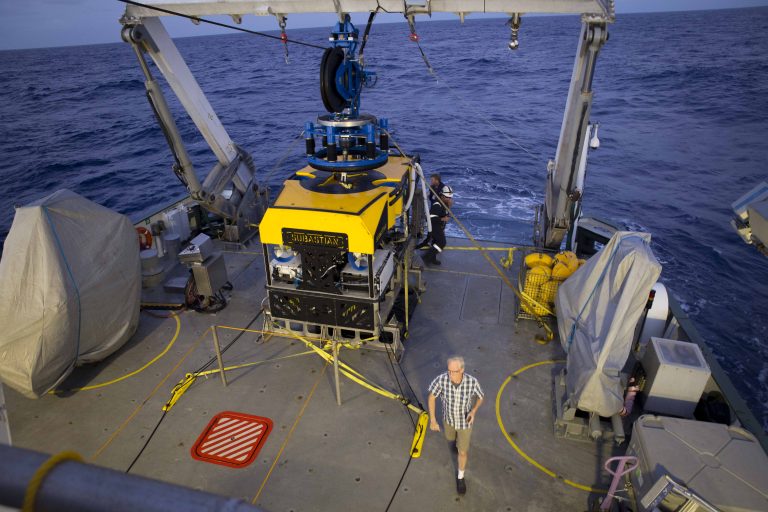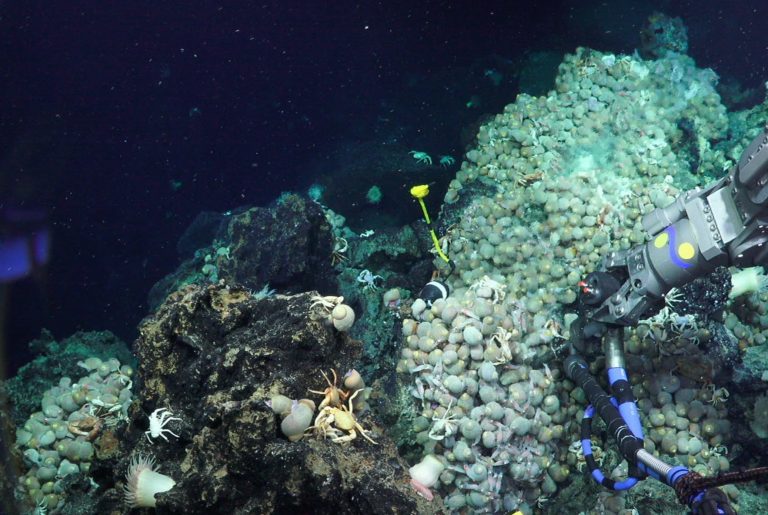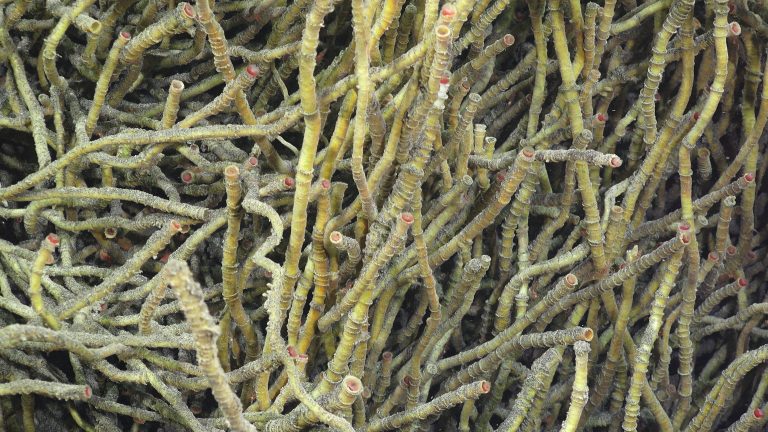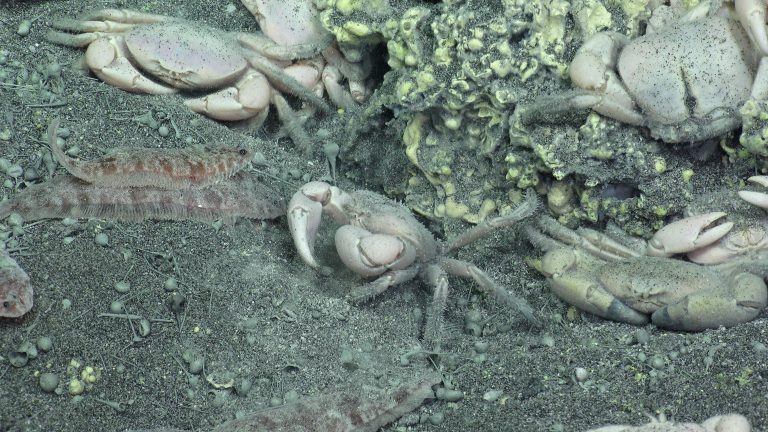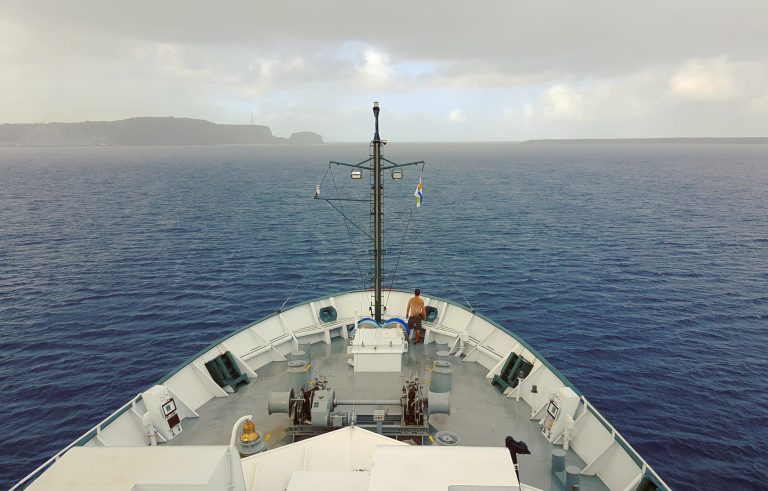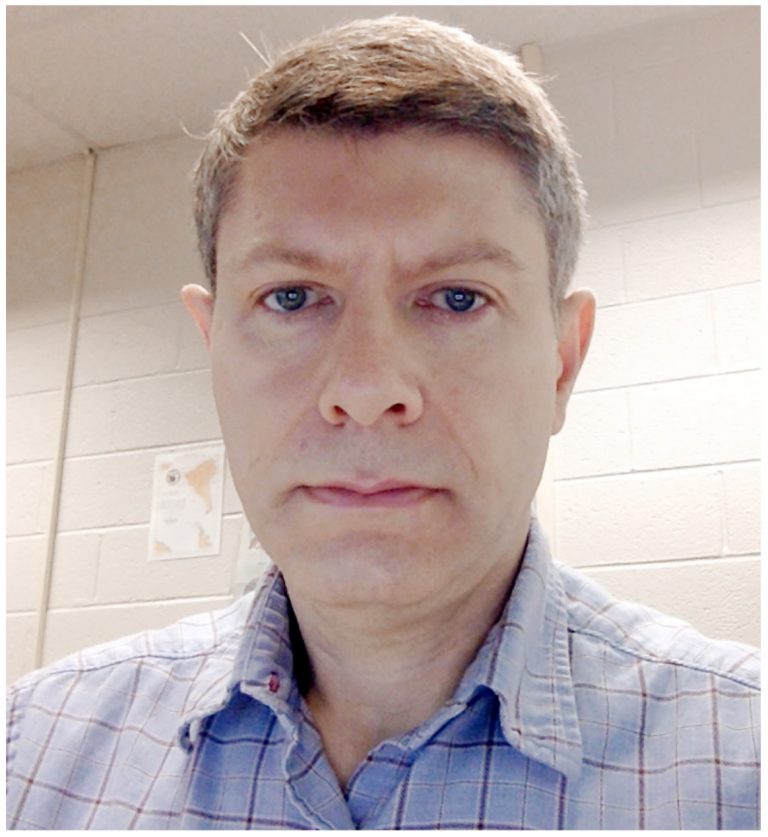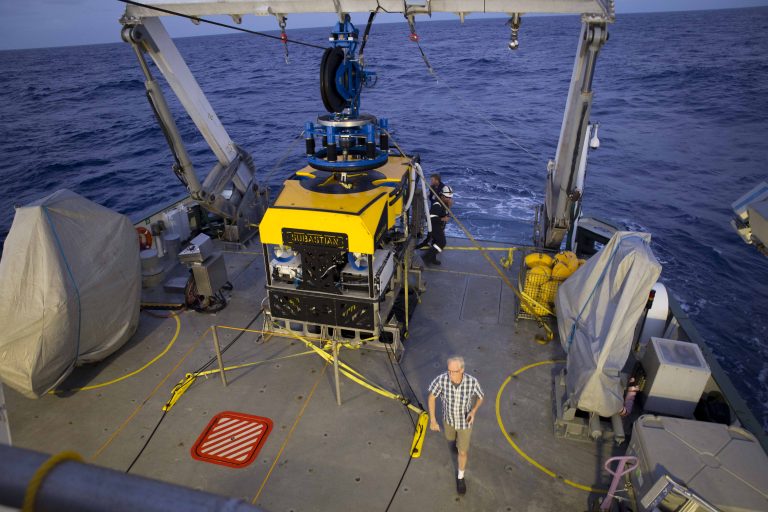Log Post: Going deeper: The Mariana Back-arc
Last week the winds in the south made it impossible to safely launch the ROV at our intended dive sites in the Back-arc. We flipped our itinerary, and headed to the northern Mariana arc, where the weather was more favorable. It was a move that really paid off and we avoided any serious loss of dive … Continued
